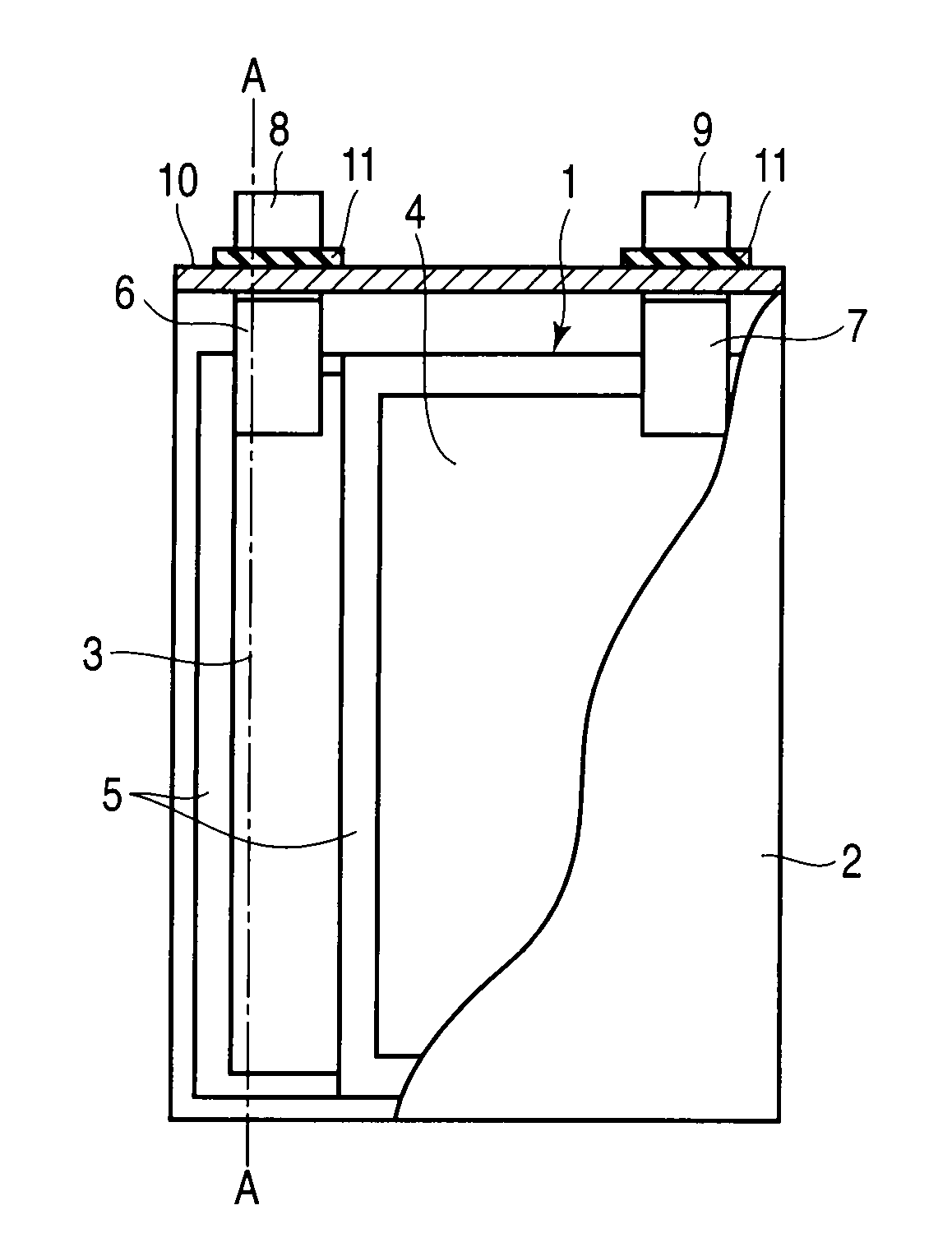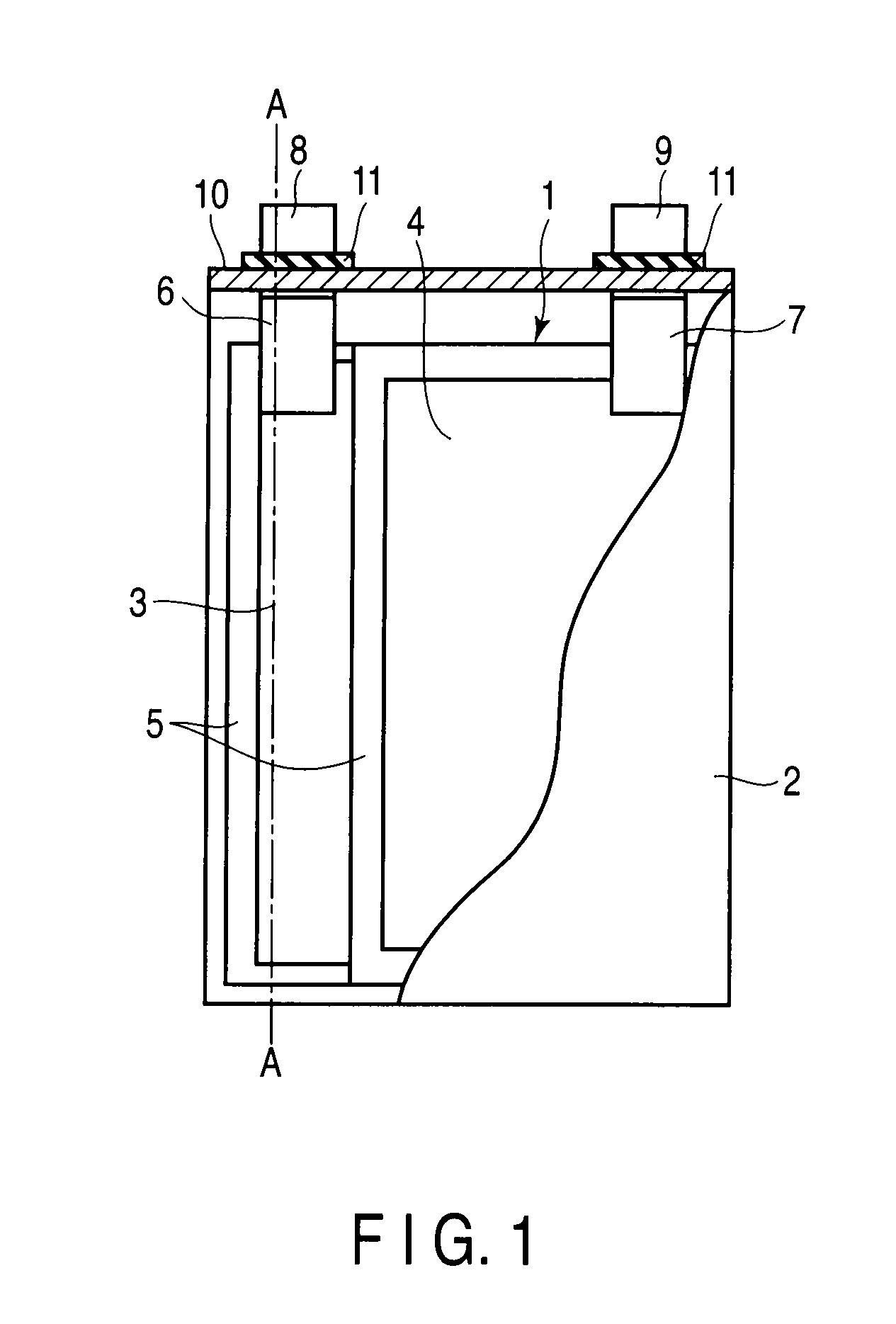Nonaqueous electrolyte battery
- Summary
- Abstract
- Description
- Claims
- Application Information
AI Technical Summary
Problems solved by technology
Method used
Image
Examples
example 1
[0082]Lithium / manganese / nickel oxide (LiMn0.2Ni0.8O2) particles were prepared as a first positive electrode active material. Also, a second positive electrode active material was prepared. The second positive electrode active material was lithium / iron phosphate (LiFePO4) particles having an average primary particle diameter of 0.1 μm and an olivine structure, and provided with carbon microparticles which had an average particle diameter of 0.005 μm and stuck to the surface thereof with an amount to be stuck of 0.1% by weight. 10% by weight of the second positive electrode active material was added to 80% by weight of the first positive electrode active material, to which were then added 5% by weight of a graphite powder as a conductive agent and 5% by weight of PVdF based on the positive electrode as a binder. These components were dispersed in n-methylpyrrolidone (NMP) solvent to prepare a slurry. The slurry was applied to each surface of an aluminum alloy foil (purity: 99% by weig...
examples 2 to 4
[0092]Thin secondary batteries were manufactured in the same manner as in Example 1 except that the composition of the lithium / manganese-containing oxide as the first positive electrode active material was changed to that shown in the following Table 1.
example 5
[0093]A thin secondary battery was manufactured in the same manner as in Example 1 except that the composition of the lithium / manganese-containing oxide as the first positive electrode active material was changed to that shown in the following Table 1 and the composition of the lithium-iron phosphate particles which had an olivine structure and to which carbon microparticles were stuck was changed to that shown in the following Table 1.
PUM
 Login to View More
Login to View More Abstract
Description
Claims
Application Information
 Login to View More
Login to View More - R&D
- Intellectual Property
- Life Sciences
- Materials
- Tech Scout
- Unparalleled Data Quality
- Higher Quality Content
- 60% Fewer Hallucinations
Browse by: Latest US Patents, China's latest patents, Technical Efficacy Thesaurus, Application Domain, Technology Topic, Popular Technical Reports.
© 2025 PatSnap. All rights reserved.Legal|Privacy policy|Modern Slavery Act Transparency Statement|Sitemap|About US| Contact US: help@patsnap.com



